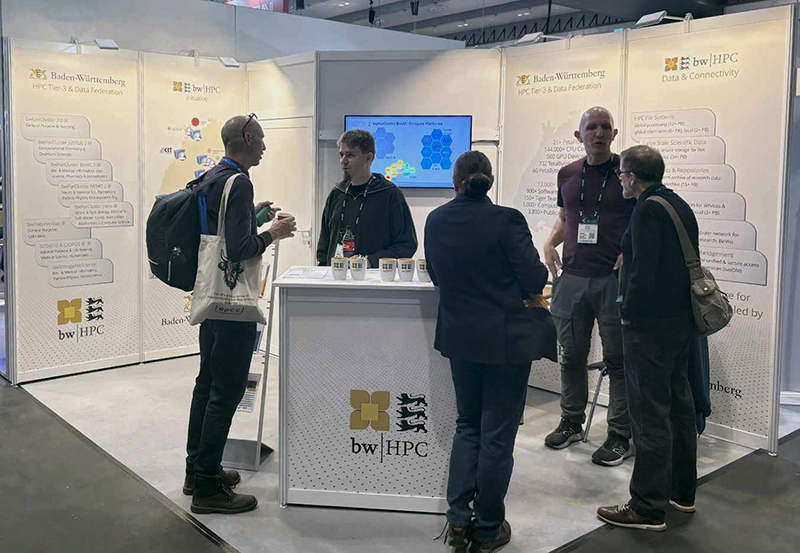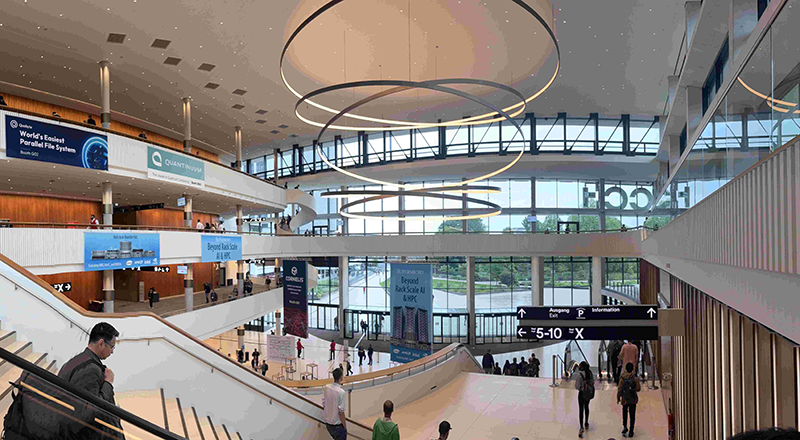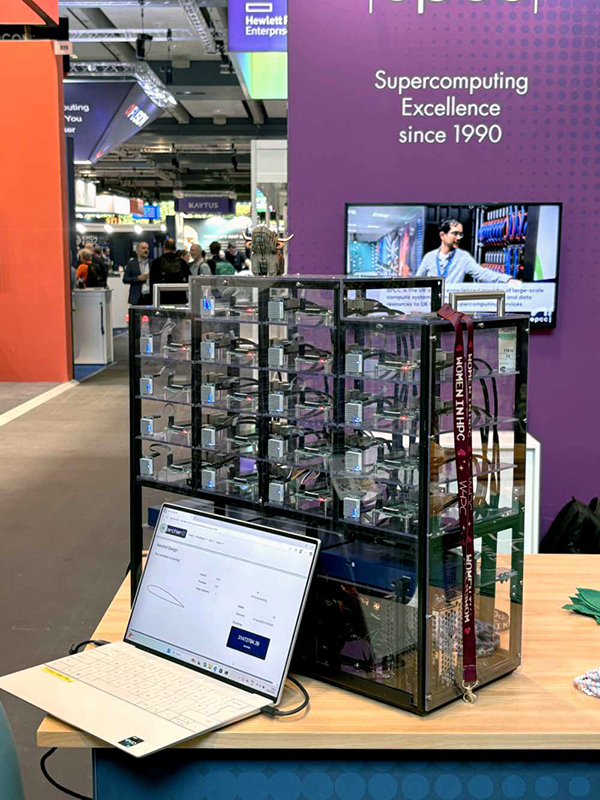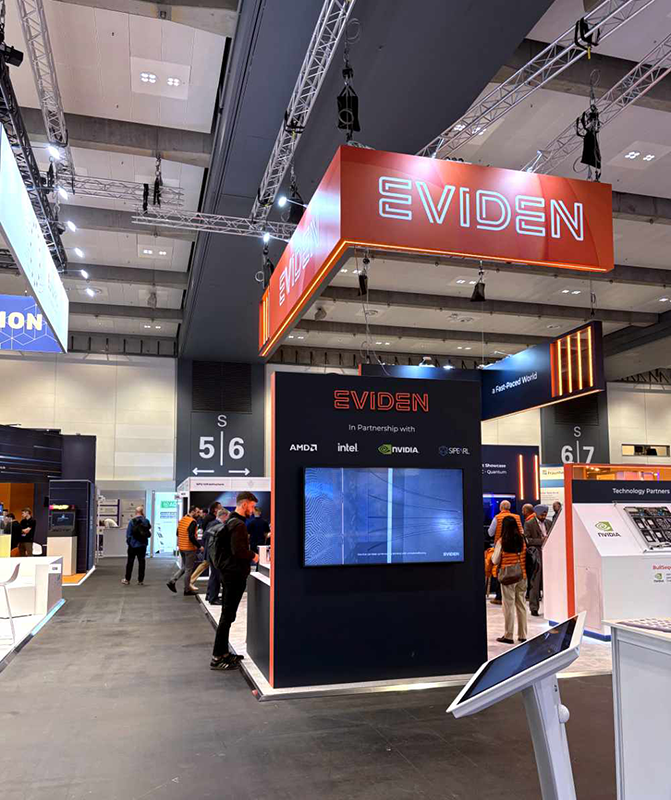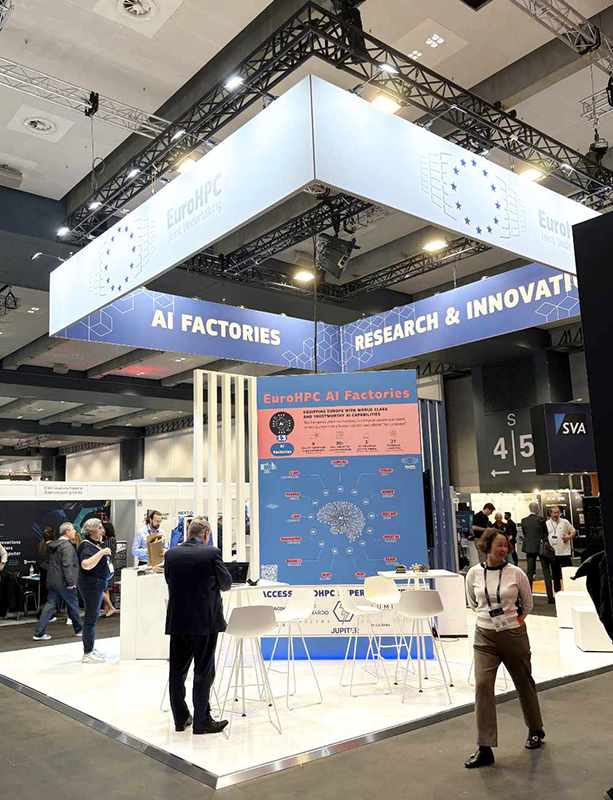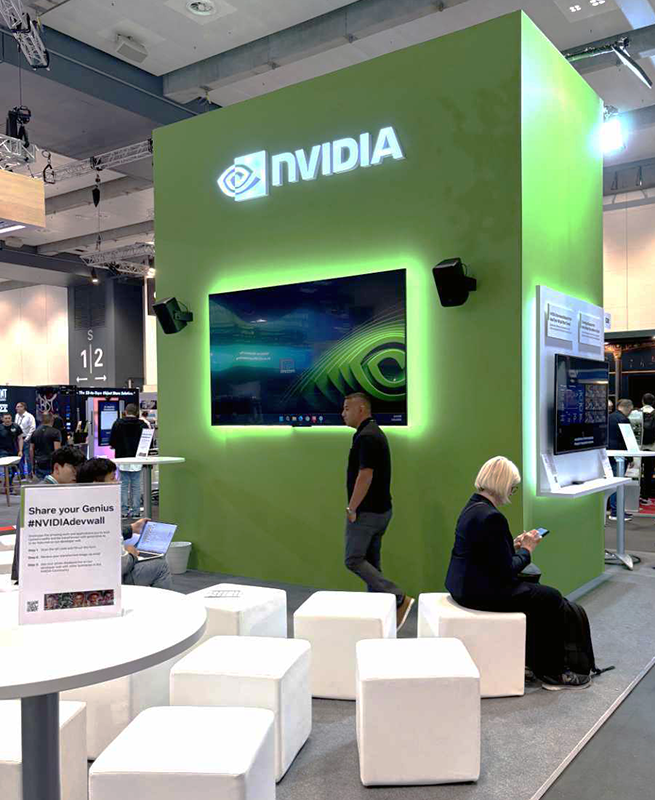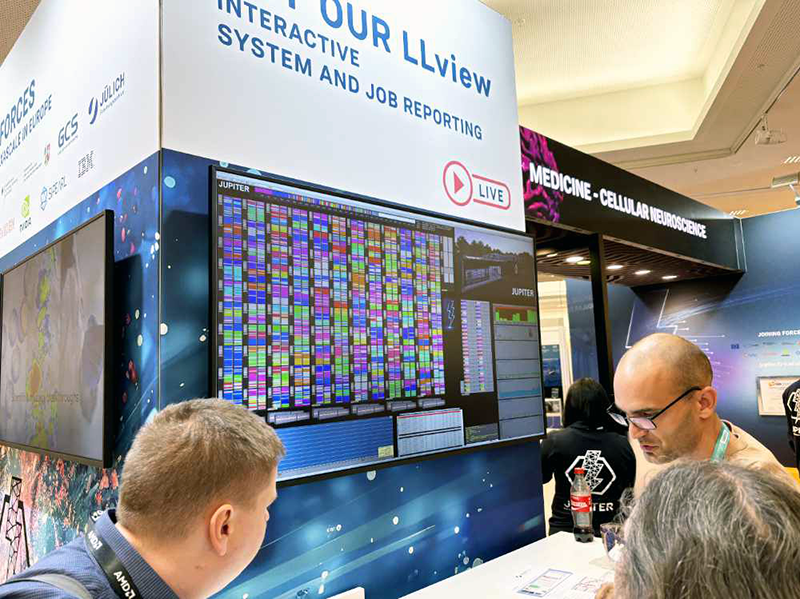ISC 2025 Flashback
From June 10th to June 12th, 2025, the International Supercomputing Conference (ISC) celebrated its 40th anniversary by opening its doors in Hamburg. The event, themed "Connecting the Dots," centered on the integration of high-performance computing (HPC) with artificial intelligence and quantum computing, with the goal of bridging gaps in scientific research, engineering, and business applications.
Experts in HPC and storage from Heidelberg, Karlsruhe, Esslingen, Freiburg, Ulm, Mannheim, Hohenheim, and Stuttgart represented bwHPC, engaging with approximately 100 visitors at our booth. These visitors were part of the 3,137 registered attendees from over 54 countries. The conference featured 195 exhibitors, including 139 hardware and software vendors and 51 research organizations, all showcasing the latest advancements in GPUs, machine learning, AI, and quantum computing.
ISC 2025 upheld its reputation as a leading event for professionals in HPC, AI, and quantum computing, offering a robust technical program and fostering a community-oriented atmosphere.
Some more impressions from ISC 2025
TOP 500 / Green 500
Erich Strohmeyer from Lawrence Berkeley National Laboratory provided an update on the current standings of the TOP 500 and Green 500 supercomputers. The top three positions in the TOP 500 remain dominated by the United States, with El Capitan leading at 1.742 EFlops/s, followed by Frontier at 1.353 EFlops/s, and Aurora at 1.012 EFlops/s. The highest-ranked European system is the Jupyter-module Booster, holding fourth place in TOP 500 with 793.4 TFlops/s.
In the Green 500 rankings, there have been no changes since last year. The Jupyter-module Jedi in Jülich continues to hold the top spot, followed by ROMEO-2025 in France.
Further Information:
- www.top500.org
- https://static.swapcard.com/public/files/803be24592fe4db3bed49640371eb337.pdf
- https://static.swapcard.com/public/files/43a71fe67e06426aaf3a98b81cd46bab.pdf
Hunter
On January 16, 2025 HLRS inaugurated its new flagship supercomputer, HUNTER. With an average energy usage of 560 KW and a theoretical peak performance of 48.1 Petaflops, HUNTER uses 80% less energy while being nearly twice as fast as its predecessor, HAWK (26 Petaflops), when running at peak performance.
According to the June 2025 Top500 List, HUNTER ranks fourth in Germany in terms of peak performance on the HPL benchmark. HUNTER is conceived as a stepping-stone system that will enable HLRS’s user community to prepare for its next-generation supercomputer, HERDER, which will offer a major leap in performance when it arrives in 2027.
Further information:
- https://www.tagesschau.de/wissen/technologie/supercomputer-hunter-stuttgart-100.html
- https://www.linux-magazin.de/news/supercomputer-hunter-geht-in-stuttgart-in-betrieb/
- https://www.heise.de/news/HRLS-Hunter-Erster-deutscher-Supercomputer-mit-AMDs-Riesen-APU-MI300A-10245689.html
- https://www.hlrs.de/de/news/detail/hlrs-feiert-die-einweihung-des-supercomputers-hunter
- https://www.regio-tv.de/mediathek/video/250116_st_b_supercomputer-mp4/
HPC around the world
Another highlight of the ISC was a comprehensive overview of HPC around the world. The conference invited organizations and HPC-representatives from various countries to showcase their recent status.
Europe
EuroHPC, the funding body for major European supercomputers, has successfully achieved its initial goal of establishing several supercomputers across the EU. By 2025, they had launched Jupyter in Jülich, Lumi in Finland, Leonardo in Italy, and Isambard-3 in England. Currently, EuroHPC is shifting its focus towards integrating "AI Factories" with supercomputing capabilities and fostering collaborations with India and Japan.
Asia
Japan, Korea, Singapore, and Taiwan are planning to integrate quantum computers with their high-performance computing (HPC) systems within the next two years. Despite its small size, Singapore, which is smaller than Hamburg, already has four supercomputers. The largest of these has a capacity of approximately 20 PFlops, and according to Gih Guang Hung, Chief Executive of the National Supercomputing Centre (NSCC) Singapore, a new 120 PFlops supercomputer is expected to be operational within the next two years.
Yutong Lu, Director of the National Supercomputing Center in Guangzhou, highlights a new trend emerging in China known as "Computility," which combines computing power with utility, exemplified by the integration of HPC with IoT devices.
Africa, Latin America & Middle East
In contrast to Singapore, Africa's most powerful supercomputer is Toubkal, located in Morocco. With a capacity of 3.16 PFlops, Toubkal supports a substantial number of active users and jobs.
There are a few collaborations in the field, such as SCALAC - the Advanced Computing System for Latin America and the Caribbean, which focuses on high-performance computing (HPC) research. This initiative brings together researchers from 14 different countries. Carlos J. Barrios H., the General Chair and a researcher, emphasized the importance of information sovereignty, even within heterogeneous systems located in the same area.

